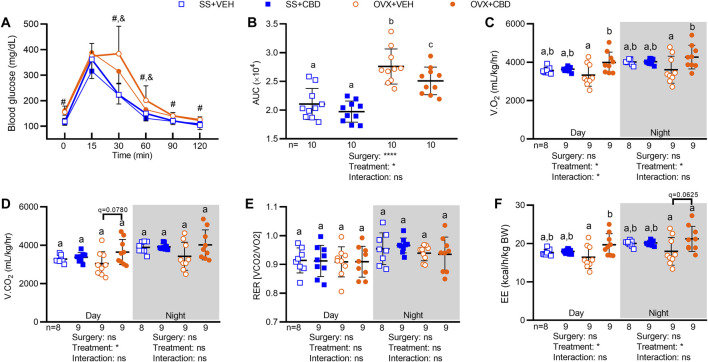FIGURE 1.
CBD increased oral glucose tolerance, O2 consumption, and energy expenditure in OVX mice. (A) After 9 weeks of CBD or VEH treatment, blood glucose readings were taken at 0, 15, 30, 60, 90 and 120 min after oral glucose challenge (2 mg/kg), n = 10 mice/group. (B) Oral glucose tolerance data in (A) represented as area under the blood glucose curves (AUC). Indirect calorimetry performed between 9 and 10 weeks on 9 mice/group showing (C) volume of oxygen consumed, V.O2, (D) volume of carbon dioxide produced, V.CO2 (E) respiratory exchange ratio, RER, and (F) energy expenditure, EE (as kcals expended per hour normalized to body weight in kg). Data are mean ± SD. The ROUT test was performed to detect outliers. 2-way ANOVA was performed followed by the Benjamini–Hochberg post-hoc test with FDR adjustment, q < 0.05. The 2-way ANOVA results for panel A are summarized in Supplementary Table S1. In panel A, pound (#) sign denotes significant difference between SS groups and OVX groups and ampersand (&) sign denotes significant difference between OVX+VEH and OVX+CBD groups, as determined by Benjamini–Hochberg posthoc test. Two-way ANOVA results are indicated under graphs (B–F). Different letters (a–c) indicate significant differences determined by the Benjamini–Hochberg post-hoc test with FDR-adjusted p values, q < 0.05.

